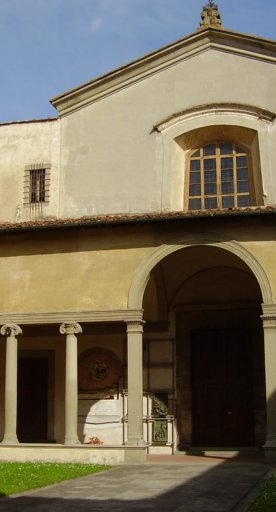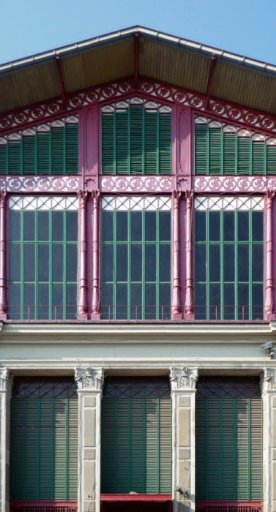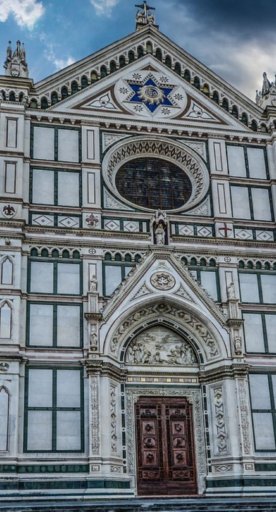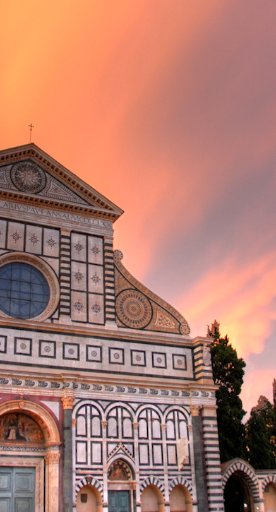Basilica of Santissima Annunziata in Florence
Discovering the main Marian shrine in the Tuscan capital
The Basilica of the Santissima Annunziata, overlooking the square of the same name, is Florence's principal Marian shrine. The foundation stone of the church, and the adjoining convent, was laid in 1250. Its richly decorated interior harks back more to Roman Baroque than to Tuscan religious tradition.
The church's name comes from a legendary fresco of the Annunciation, preserved in the Chapel of the Annunziata and an object of deep veneration: "Quivi non è arte di pennelli, onde sia stato fatto il volto della Vergine, ma cosa divina veramente" (Michelangelo Buonarroti).
Three doors open under the entrance arcade: the central one leads to the church, through the Cloister of the Vows; the one on the left leads to the Great Cloister on the left; the one on the right is the door to the Oratory of St. Sebastian.
At the top of the central arch of the outer arcade were traces of frescoes by Pontormo, painted between 1513 and 1514, which have now been replaced by copies (the originals are in Andrea del Sarto's Museo del Cenacolo). The central portal is surmounted by a mosaic Annunciation by Davide Ghirlandaio (1509).
The Cloister of the Vows, designed by Michelozzo di Bartolommeo, owes its name to the fact that for a long time it served as a place to collect ex-votos and images offered to the Madonna. On the walls are artistic testimonies by Baldovinetti, Cosimo Rosselli, Andrea del Sarto, Pontormo, Rosso fiorentino and Franciabigio.

The interior of the church is opulent, decorated with marble, stucco and gilding, with large paintings placed high up between the window spaces and a splendid ceiling frescoed by Volterrano.
Note the window with gilded grating, connected to Palazzo della Crocetta (today's Archaeological Museum) and known as the Finestra dei Principi: it was used by the Grand Duke's family to attend liturgical services held in private in the Chapel of the Madonna.
Piero de' Medici and his successors never claimed patronage rights over the Chapel of the Santissima Annunziata, the oldest nucleus of the church, and had the room to the right of the aedicule adapted as an oratory. Here, recessed into the main wall, is a large Armadio degli Argenti, which was closed by a panel painted with stories from the Life of Christ by Beato Angelico (1453), by Baldovinetti, and by the school of Angelico himself (the different parts of this panel are now in the Museo Nazionale di San Marco).
In 1444 the first stone of the Tribuna was laid, with Michelozzo di Bartolommeo as designer and director of works. The Tribuna was later enlarged and covered by a dome designed by Leon Battista Alberti.
The Basilica's numerous chapels (six on the right of the nave, seven on the left, and nine in the Tribuna) were almost all born on the initiative of wealthy Florentine families and are now named after the saint or subject painted in the altarpiece.

From inside the church, as well as from the external arcade, one can access the Chiostro Grande. All that remains today of Michelozzo's original design, after numerous transformations, are the columns and capitals.
The twenty-five frescoed lunettes under the arches are the work of Andrea del Sarto and other artists: they depict the story of the origins of the Order of Our Lady and some of the facts and miracles of the Founding Saints, and, in addition to their artistic value, are interesting for their depiction of the Florence of the time. The lunette above the secondary entrance door to the church - La Madonna del Sacco - is Andrea del Sarto's masterpiece.
Accessibility informationt: feelflorence.it










